Abstract
Cells from glucose-limited chemostat cultures of Cytophaga johnsonae were subjected to a sudden relaxation of substrate limitation by injecting the cells into fresh batch cultures. Starvation experiments were carried out by injecting glucose-limited cells into batch cultures lacking glucose. Transient responses of biomass, glucose uptake and mineralization, ATP content, and viability on different agar media were monitored during these nutrient-shift experiments. Cells reacted differently depending on growth rate and time spent in the chemostat. Fast-growing cells showed an immediate adaptation to the new growth conditions, despite some initial overshoot reactions in ATP and uptake potential. In contrast, slowly growing cells and long-term-adapted cells showed extensive transient growth responses. Glucose uptake and mineralization potentials changed considerably during the transient growth phase before reaching new levels. During the starvation experiments, all cell types displayed a fast decrease in ATP, but the responses of the substrate uptake and mineralization potentials were strongly dependent upon the previous growth rate. Both potentials decreased rapidly in cells with high growth rates. On the other hand, cells with low growth rates maintained 80% of their uptake and mineralization potentials after 8 h of starvation. Thus, slowly growing cells are much better adapted for starvation than are fast-growing cells.
Full text
PDF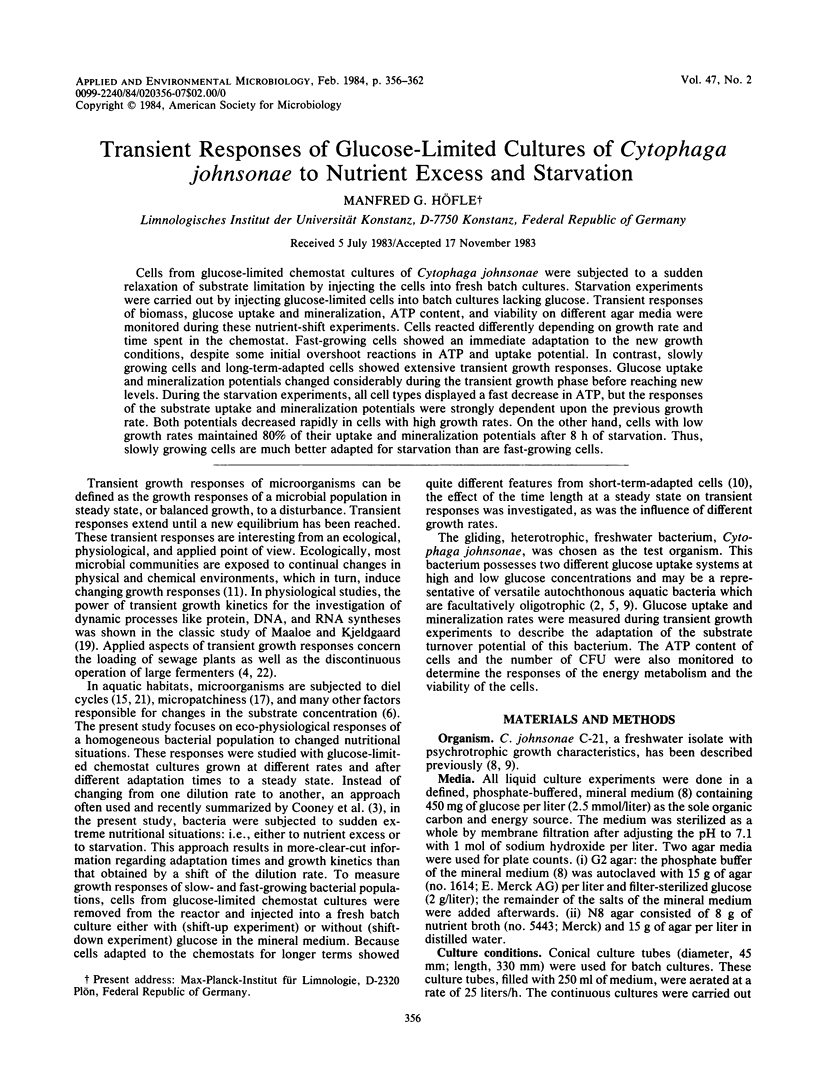
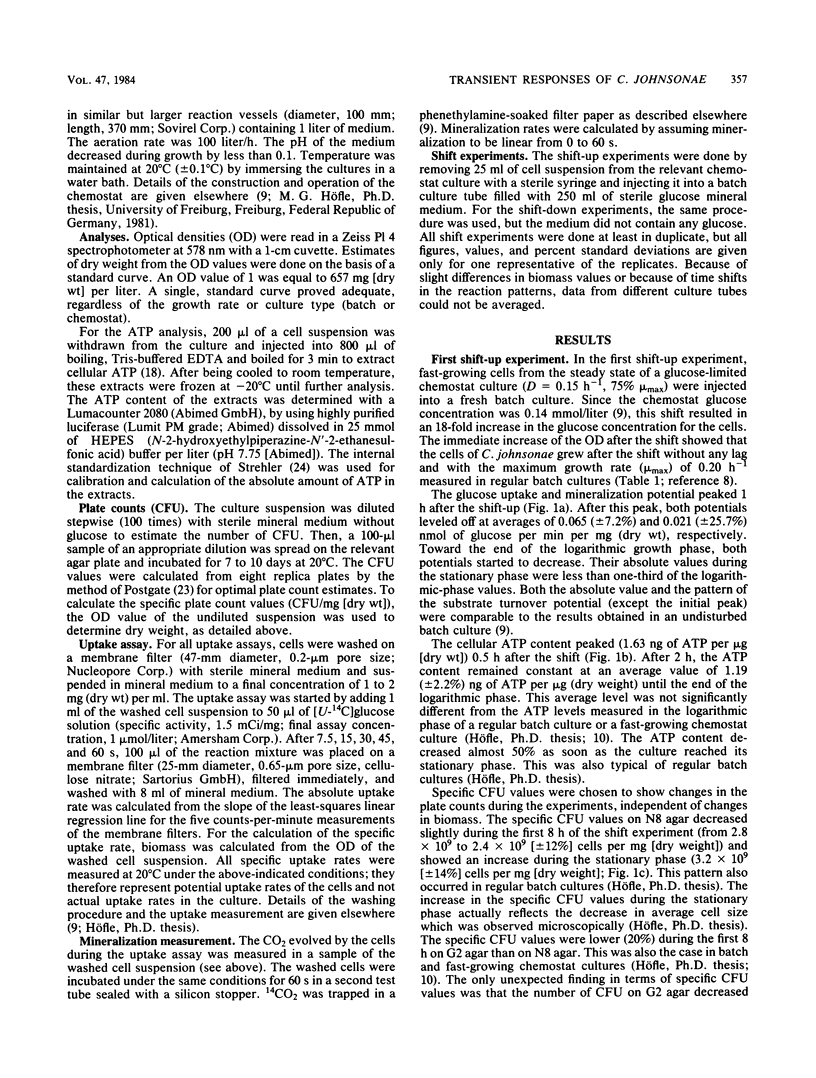
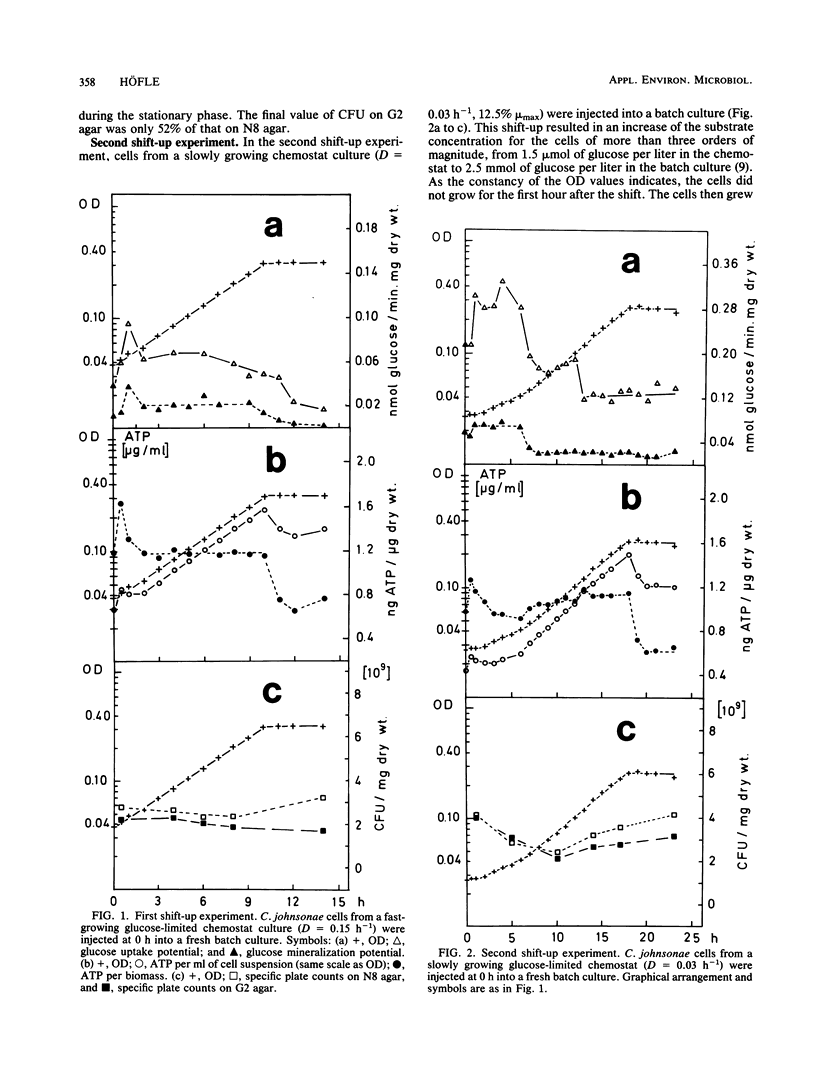
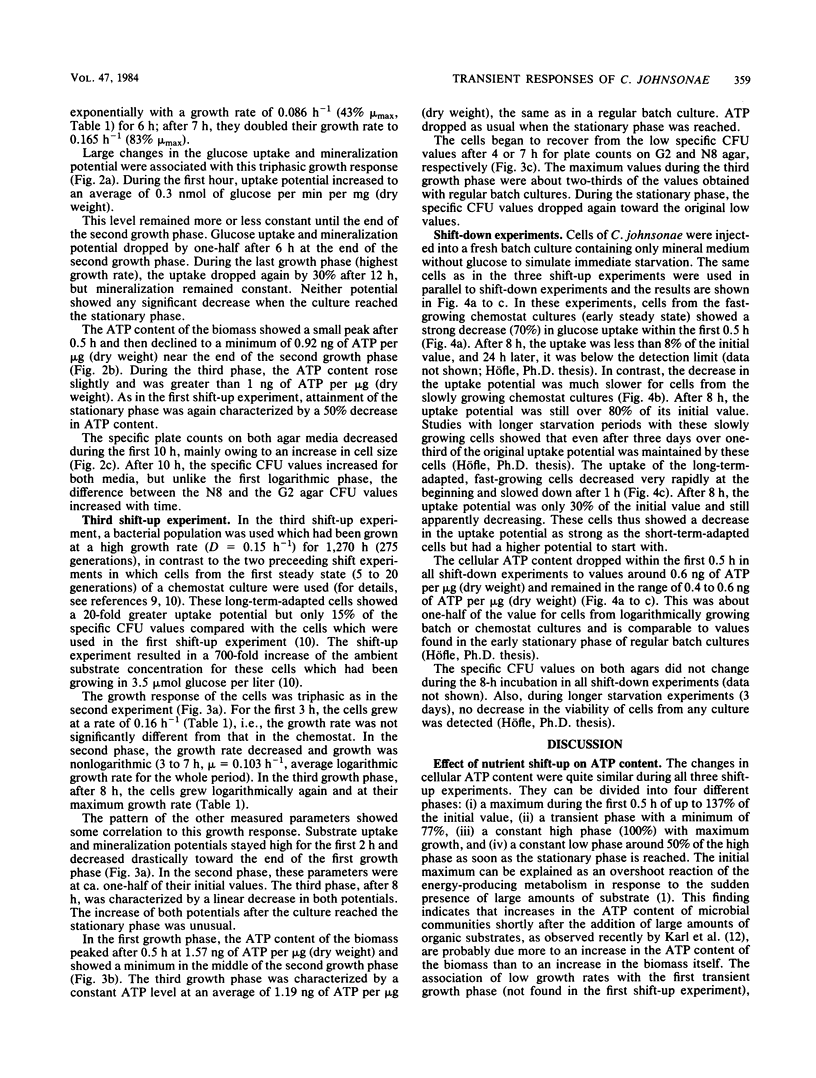
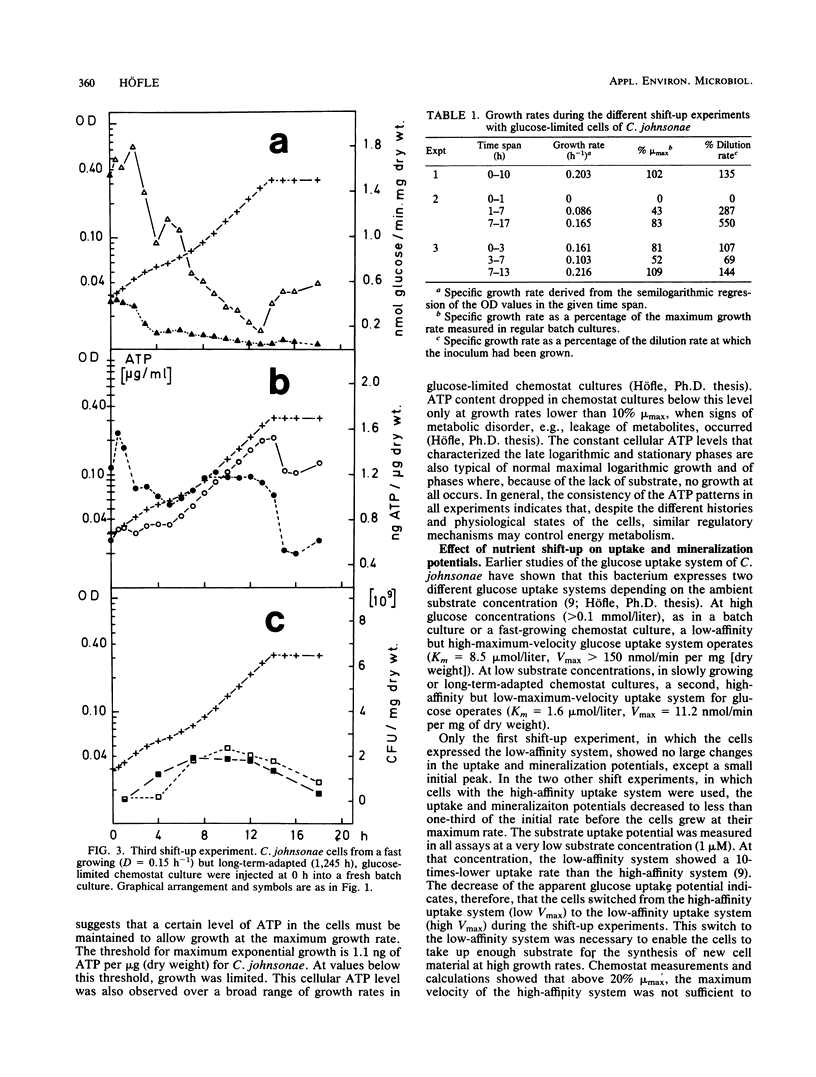
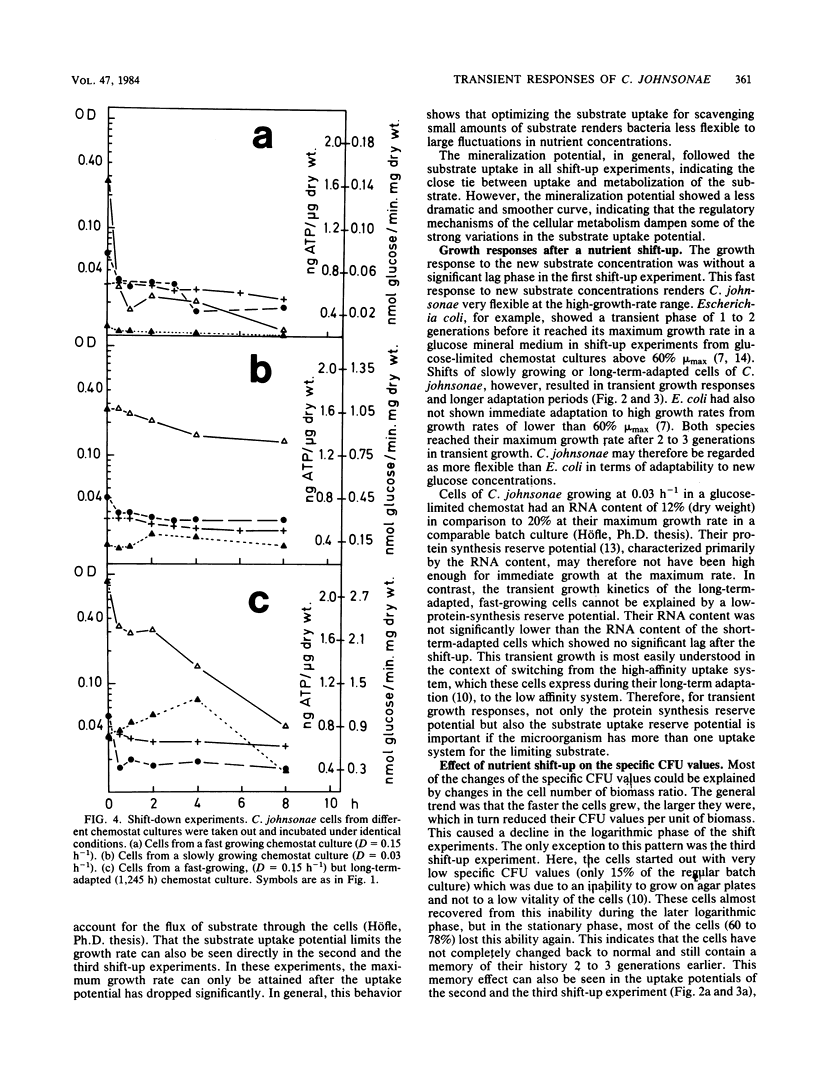
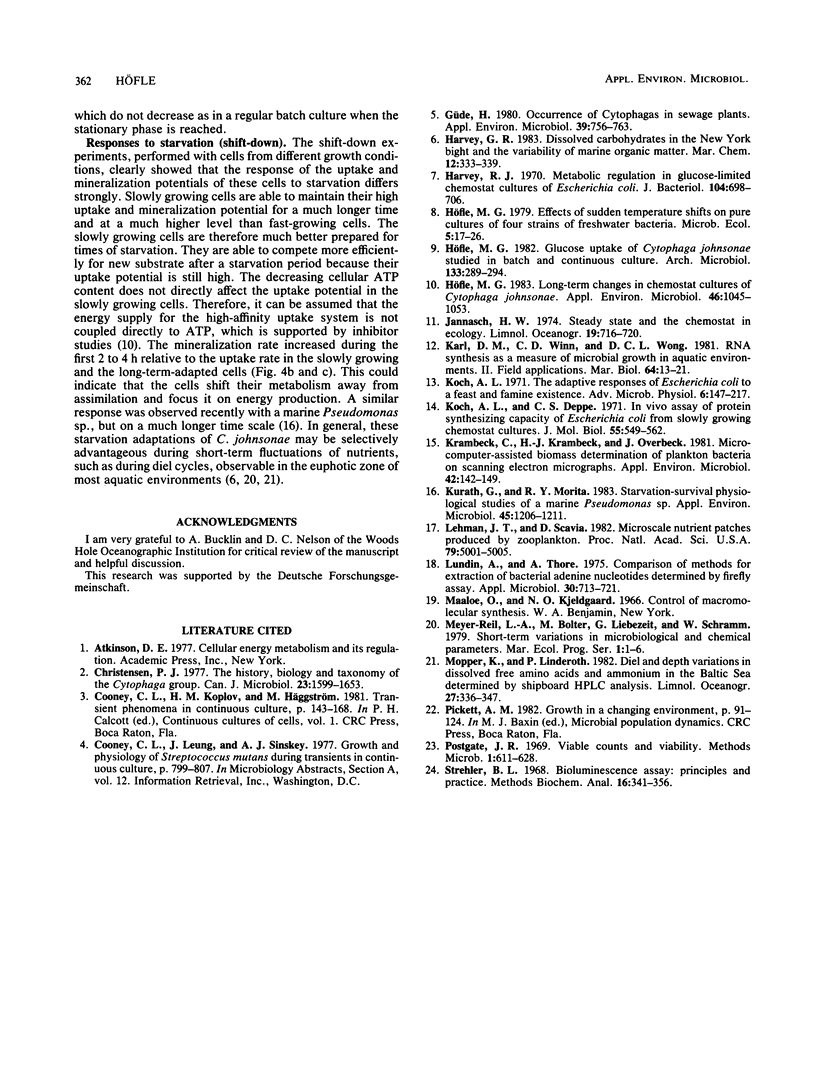
Selected References
These references are in PubMed. This may not be the complete list of references from this article.
- Christensen P. J. The history, biology, and taxonomy of the Cytophaga group. Can J Microbiol. 1977 Dec;23(12):1599–1653. doi: 10.1139/m77-236. [DOI] [PubMed] [Google Scholar]
- Güde H. Occurrence of cytophagas in sewage plants. Appl Environ Microbiol. 1980 Apr;39(4):756–763. doi: 10.1128/aem.39.4.756-763.1980. [DOI] [PMC free article] [PubMed] [Google Scholar]
- Harvey R. J. Metabolic regulation in glucose-limited chemostat cultures of Escherichia coli. J Bacteriol. 1970 Nov;104(2):698–706. doi: 10.1128/jb.104.2.698-706.1970. [DOI] [PMC free article] [PubMed] [Google Scholar]
- Höfle M. G. Long-Term Changes in Chemostat Cultures of Cytophaga johnsonae. Appl Environ Microbiol. 1983 Nov;46(5):1045–1053. doi: 10.1128/aem.46.5.1045-1053.1983. [DOI] [PMC free article] [PubMed] [Google Scholar]
- Koch A. L., Deppe C. S. In vivo assay of protein synthesizing capacity of Escherichia coli from slowly growing chemostat cultures. J Mol Biol. 1971 Feb 14;55(3):549–562. doi: 10.1016/0022-2836(71)90336-6. [DOI] [PubMed] [Google Scholar]
- Koch A. L. The adaptive responses of Escherichia coli to a feast and famine existence. Adv Microb Physiol. 1971;6:147–217. doi: 10.1016/s0065-2911(08)60069-7. [DOI] [PubMed] [Google Scholar]
- Krambeck C., Krambeck H. J., Overbeck J. Microcomputer-assisted biomass determination of plankton bacteria on scanning electron micrographs. Appl Environ Microbiol. 1981 Jul;42(1):142–149. doi: 10.1128/aem.42.1.142-149.1981. [DOI] [PMC free article] [PubMed] [Google Scholar]
- Kurath G., Morita R. Y. Starvation-Survival Physiological Studies of a Marine Pseudomonas sp. Appl Environ Microbiol. 1983 Apr;45(4):1206–1211. doi: 10.1128/aem.45.4.1206-1211.1983. [DOI] [PMC free article] [PubMed] [Google Scholar]
- Lehman J. T., Scavia D. Microscale nutrient patches produced by zooplankton. Proc Natl Acad Sci U S A. 1982 Aug;79(16):5001–5005. doi: 10.1073/pnas.79.16.5001. [DOI] [PMC free article] [PubMed] [Google Scholar]
- Lundin A., Thore A. Comparison of methods for extraction of bacterial adenine nucleotides determined by firefly assay. Appl Microbiol. 1975 Nov;30(5):713–721. doi: 10.1128/am.30.5.713-721.1975. [DOI] [PMC free article] [PubMed] [Google Scholar]


